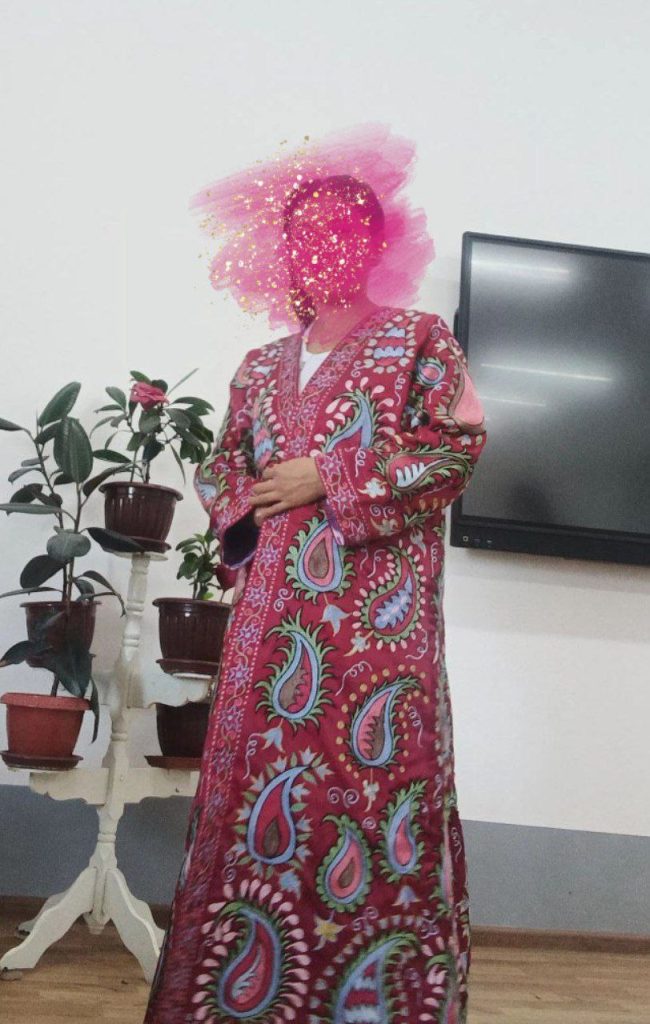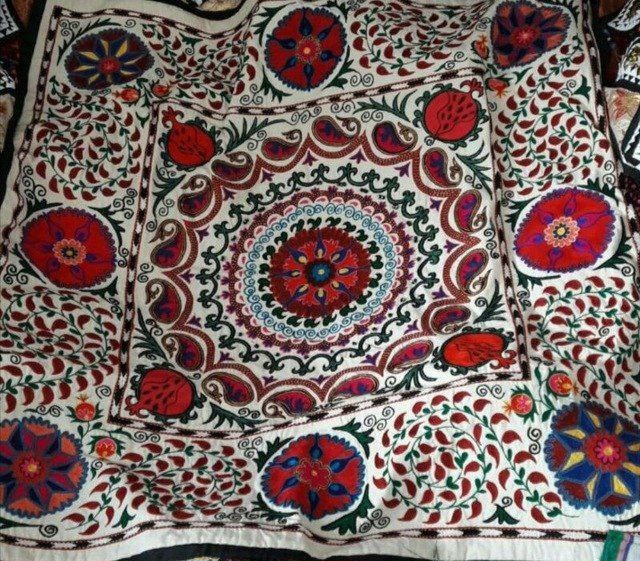

Embroidery
Embroidery is one of the oldest and most traditional crafts in Uzbekistan. For centuries, the people of Nurota, Shahrisabz, Fergana, Tashkent, Samarkand, and Bukhara have practiced this art. When stitching techniques, threads, fabrics, and patterns are harmonized, they create a beautiful result. Embroidery features a wide variety of stitches, colors, patterns, and fabrics. Bright colors are often used to make the designs more attractive.
Stitching techniques
Chain stitch, double stitch, couching, satin stitch, and others.
Threads used in embroidery
Silk, wool, cotton.
Silk thread – the most delicate and glossy (often used for suzani).
Wool thread – warmer, used for robes (chopon) and pillows.
Cotton thread – cheaper and available in many colors.
Silk is preferred because its shine lasts long and gives elegance to the design.
Fabrics for embroidery
Mainly strong and smooth fabrics are chosen: adras, coarse cotton, silk, and others.
Meanings of patterns
Pomegranate – blessing, abundance
Almond – happiness, fertility
Pepper – protection from the evil eye
Meanings of colors
Red – life, love
Green – nature
Blue – sky, loyalty
White – purity
Embroidery is 100% handmade (stitched with a needle or a hooked tool).
According to ancient traditions, Uzbek girls – future brides – prepared various embroidered items for their dowry: handkerchiefs, curtains, belts, bags, vests (nimcha), bedsheets, suzani, clothing decorations, headwear, and other gifts. At the wedding, the bride presented the items she had made to the groom’s relatives. Before the wedding, the dowry was displayed as an exhibition to demonstrate the bride’s skill and diligence. The finer and more beautiful the embroidery, the more highly it was valued. Girls were taught embroidery from a very young age and, after three to four years, began embroidering independently.
Today, one of the most popular garments is the suzani robe (chopon), which combines tradition and modernity and appeals to everyone. Iroqi stitching is mainly found on girls’ skullcaps (doʻppi). On Uzbekistan’s national holiday Navruz, people wear iroqi skullcaps, khan-atlas, adras, and suzani robes.

Pingback: Synchronized Chaos October 2025: Union and Dissolution | SYNCHRONIZED CHAOS